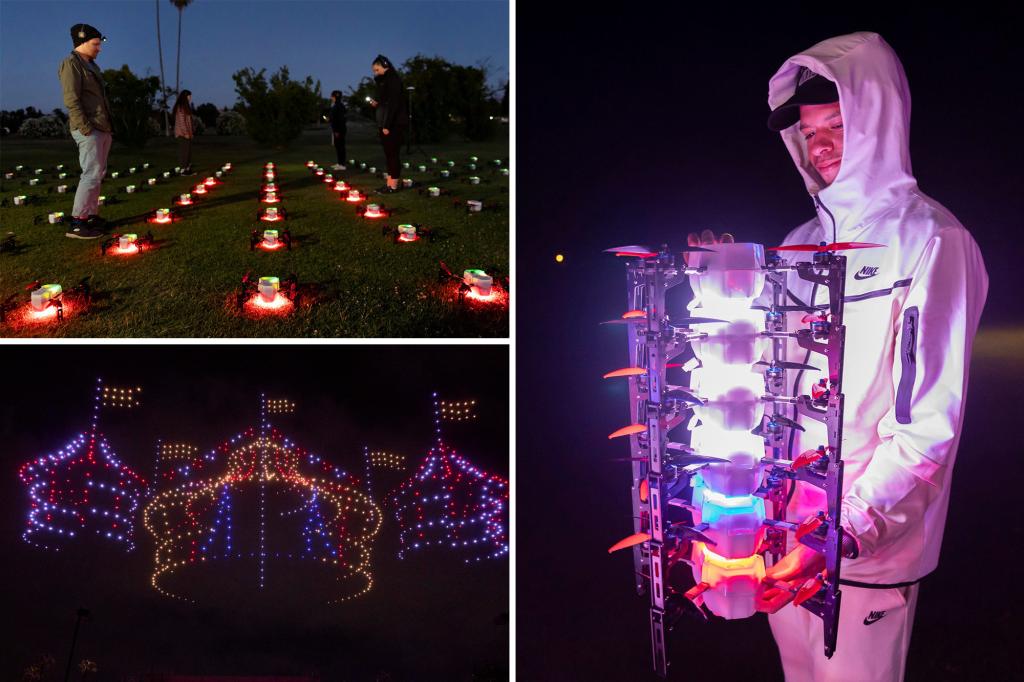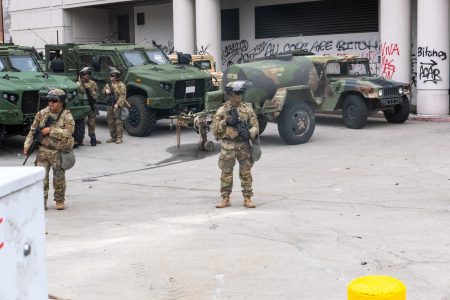The cancellation of a planned New Year’s Eve drone show in Manhattan’s Central Park has cast a shadow over the festive occasion, raising concerns about the safety and regulation of these increasingly popular aerial displays. The decision, announced by the New York Road Runners (NYRR), organizers of the annual Midnight Run, comes just days before the event and follows a disturbing incident in Orlando, Florida, where a young boy was seriously injured by a malfunctioning drone during a Christmas show. The incident has sparked a national debate about the potential risks associated with drone technology and the need for stricter oversight.
The NYRR’s decision to scrap the drone show, which was intended to feature a fleet of 500 synchronized drones illuminating the night sky above Central Park, was described as being “out of their control.” While the organization did not explicitly cite the Orlando incident as the reason for the cancellation, the timing strongly suggests a connection. The unfortunate event in Florida served as a stark reminder of the potential dangers inherent in drone technology, especially when deployed in close proximity to large crowds. The incident underscores the need for comprehensive safety protocols and rigorous testing procedures to mitigate the risks associated with drone malfunctions.
The Orlando incident involved a 7-year-old boy named Alezander who sustained severe injuries when a drone from a holiday light show malfunctioned and struck him in the face and chest. The drone, part of a coordinated aerial display, reportedly crashed mid-air before plummeting into the crowd. The impact of the drone not only caused physical trauma but also resulted in the boy being electrocuted, necessitating several hours of open-heart surgery. The incident left the young boy with significant injuries, including a lacerated upper lip and potential long-term health complications. The severity of the injuries highlighted the potential for catastrophic outcomes when drone technology malfunctions in public spaces.
The drone show in Orlando was organized by Sky Elements Drones, a Texas-based company that is now under investigation by the Federal Aviation Administration (FAA). The company had also been contracted to manage the Central Park drone show, further solidifying the link between the two events. The FAA’s investigation will likely focus on the circumstances that led to the drone malfunction and the adequacy of the safety measures implemented by Sky Elements Drones. The outcome of the investigation could have far-reaching implications for the drone industry, potentially leading to stricter regulations and enhanced safety protocols for drone shows and other public displays.
The NYRR’s initial decision to incorporate a drone show into the New Year’s Eve celebration was partly influenced by prevailing environmental conditions. Months of severe drought in the tri-state area had led to restrictions on fireworks displays, prompting organizers to explore alternative options. Drone shows, with their dazzling light displays and minimal environmental impact, seemed like a viable and exciting alternative to traditional fireworks. However, the incident in Orlando and the subsequent cancellation of the Central Park show have raised questions about the long-term viability of drones as a replacement for fireworks in large public events.
Despite the disappointment surrounding the cancellation of the drone show, the NYRR has assured participants that the Midnight Run will still be a memorable event. Organizers have promised “surprises and delight activations” along the race route, particularly near the Bethesda Fountain, to compensate for the absence of the drone display. While the unexpected change of plans undoubtedly alters the planned spectacle, the focus remains on celebrating the New Year and providing runners with a festive and enjoyable experience. The incident serves as a cautionary tale, highlighting the importance of balancing technological innovation with public safety and the need for continuous vigilance in the face of emerging technologies. As drone technology continues to evolve and become more prevalent in our daily lives, it is crucial to prioritize safety and ensure that adequate regulations are in place to protect the public from potential hazards.










